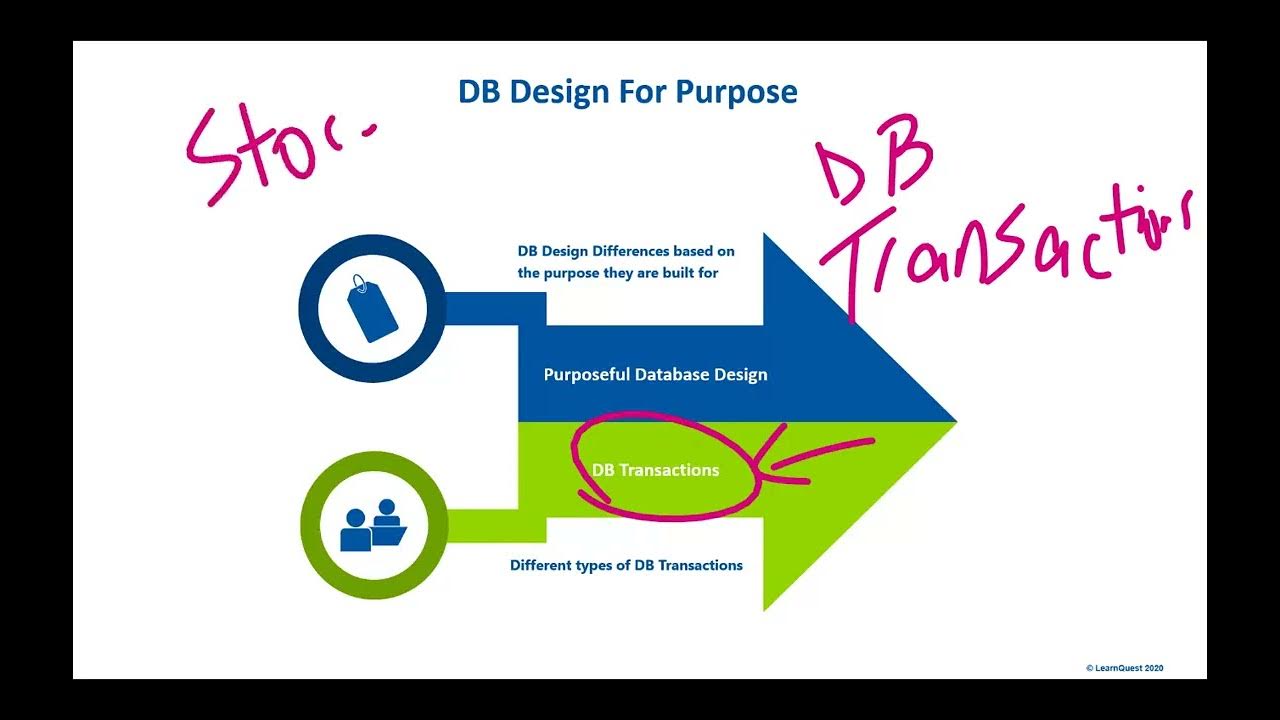Транзакции | Введение | ACID | CAP | Обработка ошибок
Summary
TLDRThis video explains database transactions, focusing on their role in ensuring data integrity and consistency. It covers the ACID properties (Atomicity, Consistency, Isolation, Durability) and their importance in relational databases, such as MySQL. The video also introduces the CAP theorem for distributed databases and the challenges of managing data consistency in large systems. Key strategies for handling transaction errors and maintaining database reliability are discussed, including approaches to avoid data duplication and ensuring proper error handling. The video is a comprehensive guide for understanding transaction management and choosing the right database system.
Takeaways
- 😀 Transactions group multiple database operations into one logical unit, ensuring atomicity.
- 😀 A transaction can either be successfully completed (commit) or entirely rolled back if something goes wrong.
- 😀 Using transactions prevents inconsistencies, such as multiple orders being placed for an out-of-stock item.
- 😀 Transactional databases (ACID) ensure Atomicity, Consistency, Isolation, and Durability for reliable data management.
- 😀 Non-transactional databases (CAP) prioritize scalability and availability, sometimes at the cost of consistency.
- 😀 The CAP theorem states that it's impossible to guarantee consistency, availability, and partition tolerance simultaneously in a distributed system.
- 😀 Concurrency issues, such as two users ordering the same item, require careful handling to avoid data conflicts.
- 😀 In the event of temporary errors like server crashes or network failures, retrying a transaction can resolve the issue.
- 😀 For preventing data duplication, clients can store temporary data and ensure only one transaction per specific identifier is committed.
- 😀 Proper error handling is essential for user-driven issues, like violating data integrity constraints, guiding users to correct their input.
- 😀 When dealing with distributed systems, choosing the appropriate database type (transactional vs non-transactional) depends on the specific system requirements.
Q & A
What is a transaction in the context of databases?
-A transaction in a database is a way to group several database operations into a single logical unit. It ensures that either all changes are successfully committed or none of them are, preserving the integrity of the data.
What are the potential problems when database operations are not grouped in a transaction?
-Without transactions, some operations may succeed while others fail, leading to inconsistencies. For example, an order might be created for a product that is out of stock, or two users may place orders for the same item when there's only one available.
What is the difference between atomicity and isolation in transactions?
-Atomicity ensures that a transaction is fully completed or fully rolled back, while isolation defines how one transaction’s changes can affect another transaction. Higher isolation levels minimize interference but may incur higher costs in terms of performance.
Can transactions solve concurrency issues in databases?
-Yes, transactions help resolve concurrency issues by ensuring that one transaction's changes do not conflict with others. They manage how data is accessed and modified by multiple users at the same time, reducing potential inconsistencies.
What is the 'CAP theorem' and how does it apply to databases?
-The CAP theorem states that a distributed database system can guarantee only two of the three properties: Consistency, Availability, and Partition Tolerance. This means there must be a trade-off between consistency and availability in the case of network partitioning.
What are the key differences between transactional and non-transactional databases?
-Transactional databases, such as MySQL or PostgreSQL, focus on reliability and ACID (Atomicity, Consistency, Isolation, Durability) properties, while non-transactional databases like MongoDB or Cassandra prioritize scalability and availability, often at the expense of strict consistency.
What is the significance of isolation levels in database transactions?
-Isolation levels control the visibility of uncommitted changes to other transactions. They help balance between performance and data consistency, with higher isolation levels offering more consistency but potentially reducing system throughput.
What are some strategies for handling transaction failures or errors in a database?
-A common strategy for handling transaction failures is to retry the transaction, especially in cases where failures are caused by temporary issues like server reboots. Another approach is to implement error handling and ensure that transactions are idempotent to avoid data duplication.
Why might a database require non-transactional storage in certain applications?
-Non-transactional storage systems are useful when the priority is high availability and scalability, especially in distributed systems. These databases are designed to handle large volumes of data and traffic while sacrificing strict consistency in favor of performance and fault tolerance.
How can database transactions help avoid data duplication during network failures?
-Transactions can help prevent data duplication by ensuring that once a transaction is committed, no further changes can be made until the operation is fully confirmed. If a network failure occurs, the client can retry the transaction, and through proper error handling, avoid duplicate entries.
Outlines

Esta sección está disponible solo para usuarios con suscripción. Por favor, mejora tu plan para acceder a esta parte.
Mejorar ahoraMindmap

Esta sección está disponible solo para usuarios con suscripción. Por favor, mejora tu plan para acceder a esta parte.
Mejorar ahoraKeywords

Esta sección está disponible solo para usuarios con suscripción. Por favor, mejora tu plan para acceder a esta parte.
Mejorar ahoraHighlights

Esta sección está disponible solo para usuarios con suscripción. Por favor, mejora tu plan para acceder a esta parte.
Mejorar ahoraTranscripts

Esta sección está disponible solo para usuarios con suscripción. Por favor, mejora tu plan para acceder a esta parte.
Mejorar ahoraVer Más Videos Relacionados

Lecture 31: Transactions/1 : Serializability

3 reasons you should use Postgres Functions and Transactions

Postgresql- when a checkpoint and bgwriter will be executed | Postgres Q&A

Pengertian Apa Itu Konsep Basis Data | PART 1

Pertemuan 1 - Pemrograman Basis Data : Normalisasi 1-NF

What You Will Learn in Module 5
5.0 / 5 (0 votes)
